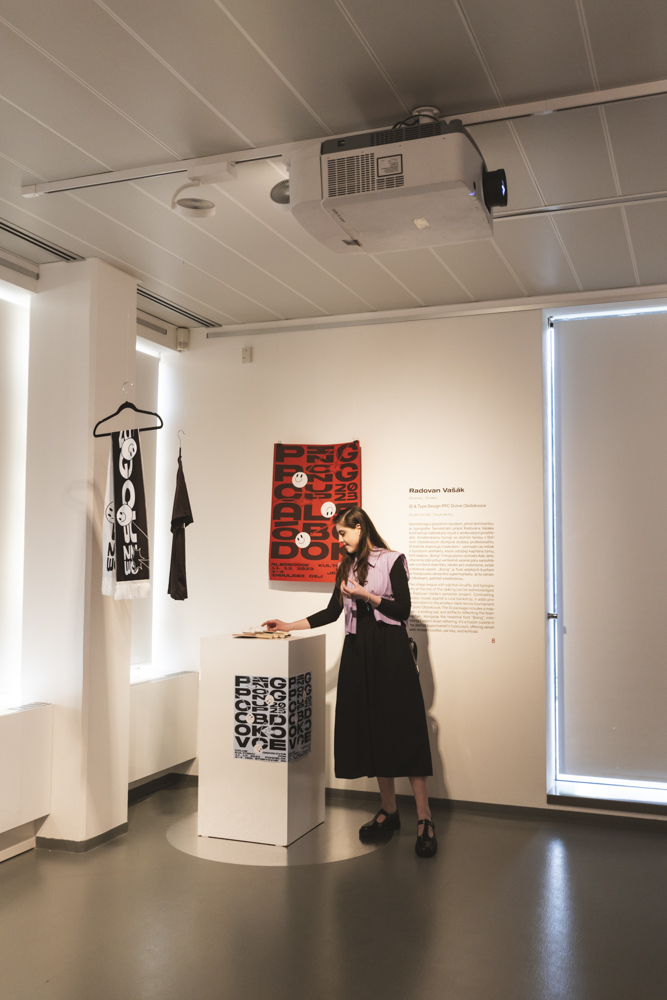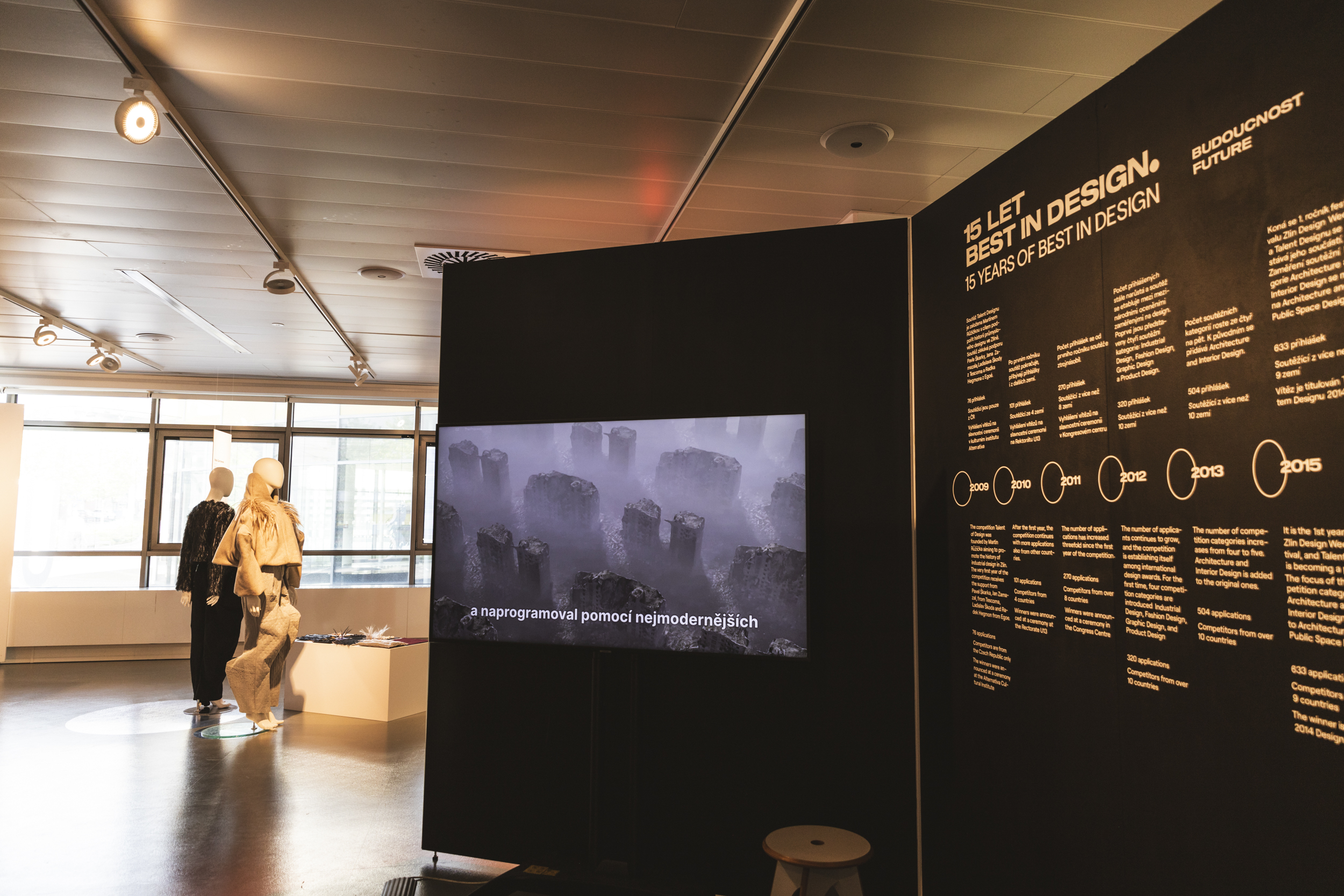The international competition Best in Design, which takes place every year under the auspices of the Zlin Design Week festival, knows this years’ winners. Yesterday, Saturday, June 11, the opening of the exhibition of the final works of all four categories – Product & Industrial Design, Fashion Design, Service Design and Communication Design – took place. After the opening, the finalists together with the judges moved to the Tomáš Bata Memorial, where a gala award ceremony took place. In addition to the four categories, the contestants could also win three other awards – the Best in Design title, the Media Award and the special Martina Dlabajová award.
Product & Industrial Design Category
Judges: Zuzanna Wójcik, Hanna Litwin & Romin Heide (Büro Famos)
Marek Kuźmiński – Hands Up – Prosthesis with Superpowers: 1st place
The “Hands Up” project by Marek Kuźmiński combines social, inclusive and universal design with play and bioengineering. In cooperation with AutoMedPrint from the Technical University in Poznań, prostheses with “superpowers” for children with disabilities were created by 3D printing from PLA material. The aim is to strengthen the self-confidence of school-bound children and involve them in designing their own prostheses. The project responds to the needs of schools and families of children with special needs. The children themselves actively participated in the design for 6 months and thus contributed to their own more accessible future.

Nikola Chromečková & David Hotárek – Pop Up Pastry Shop & Big Bite: 2nd place
With their work, they enliven the interaction of confectioners with customers using their outdoor pop-up pastry shop, which reflects traditional Czech confectionary motifs. Their “Roof”, “Target” and “Line” desserts are designed for comfortable consumption in the hand and combine historical research with modern design, ensuring unique gastronomic experiences and promoting community cohesion.

Max Greiner – About Slag: 3rd place
In About Slag, he explores the innovative use of slag, a mineral by-product of metallurgical production often overlooked in traditional applications. Through processes such as glass casting and blowing, the project transforms slag into a versatile material for crafts and industry. By incorporating slag into the glass mass, it offers sustainable alternatives, reducing raw material consumption and energy costs. With this survey, it initiates a dialogue about the transformation of raw materials and supports a more ecological approach to production.

Fashion Design Category
Judges: Branko Popovic, Marija Petraityte
Rafał Zakrzewski – Reconnect with Cloth: 1st place
In his clothing collection, he explores the close connection of these aspects in clothes whose surfaces stimulate the tactile senses and have a therapeutic effect. Clothing is involved in everyday interactions and its construction enables a multi-layered interaction with our senses. Receptors react to surface changes, which is why Rafal’s components are made heavier and coated with applications. These then stimulate the touch and offer massage and physical relaxation to the wearer. Techniques such as 3D printing, laser cutting or additive FDM application of material in semi-liquid form were used in production.
Aidan-Jayson Peters – DUNUSA: Life of a Garment: 2nd place
DUNUSA in Johannesburg is a street market with an abundance of second hand clothing, often unused, imported from Europe. Local designer Aidan-Jayson Peters transformed these garments into avant-garde creations that reflect local culture while provoking a discussion about overconsumption in the west and its impact on the environment in South Africa. Through his works, he criticizes the unsustainability of the clothing industry and its influence on informal economies.
Ziyao Xiao – Embracing Female Healing: 3rd place
The project is inspired by the stories of breast cancer survivors, including her mother, aunt and grandmother. She uses their floral and lace wardrobes and their favorite colors to create clothes that symbolize their strength and resilience. This collection reflects both psychological struggles and a new acceptance of life after illness, highlighting women’s ability to face life’s challenges.

Service Design Category
Judges: Matěj Malecha, Janka Csernák
Dorothea Wagnerberger – Gendermedol+: 1st place
The Gendermedol+ project aims to eliminate the health risks caused by a standardized medical diagnosis based on the male “standard”. This exhibition course uses interactive methods such as case study cards and puzzles to educate about gender differences in treatment and encourages visitors to actively search for diagnoses.
Carlos Bravo – Multisensory Strategy to Support Visitor Navigation and Promote Accessibility in the Outdoor Area of the Silesian Museum: 2nd place
Carl Bravo’s innovative project improves orientation in the exterior of the Silesian Museum in Poland by targeting the tactical, auditory and visual senses. It contains information in four languages: Polish, Braille, English and Polish Sign Language, and is complemented by a web application with voice descriptions.
Michal Kyselica – Design of DAS: 3rd place
In his diploma thesis, he redesigned the assistance application for train drivers, which now offers better clarity and readability of information, and introduces new functions to increase concentration while driving. The application meets the highest standards for 3D display, route and track overview and notification systems. The development of the app involved extensive qualitative research and product testing.
Communication Design Category
Judges: Adrián Gubrica, Eva Horská & Jakub Horský (UPUPÆPOP), Pavol Kyselica
Barbora Kramná – FEMME Female Issue: 1st place
She created a book that explores women’s issues using artificial intelligence. She used AI to ask questions about the female body, beauty, reproduction and prostitution and processed the answers into art compositions available at beta.dreamstudio.ai. The book consists of the complete works of AI as well as their excerpts, which reflect a contemporary view of women’s issues and problems, demonstrating that AI only reflects the knowledge we have given it.

Lukáš Demovič – Motion Design in Motion / La Montagniere: 2nd place
His work focused on 3D modeling, texturing, animation and sound design through reimagining the Alpine A110 in a short film. The project involved a complex creative process, including creating scenes and compositions and testing skills, which resulted in a rally-themed video. In doing so, Lukáš showed that today an individual with a laptop and the Internet can achieve what would have required an entire team two decades ago.
Radovan Vašák – ID & Type Design PPC Dolné Obdokovce: 3rd place
His project connects a global visual with a rural environment through the design for an amateur table tennis tournament in Dolné Obdokovce. The project includes a mascot in the shape of a smiling ball and the “Boing” typography, inspired by East Asian scripts, with unique placement of vowels and reduced diacritics for different types of layouts.
All three special categories – the Best in Design title, the Media Award and the Martina Dlabajová special award – were won for the first time this year by Marek Kuźmiński with the project Hands up – a prosthesis with superpowers. Congratulations!













